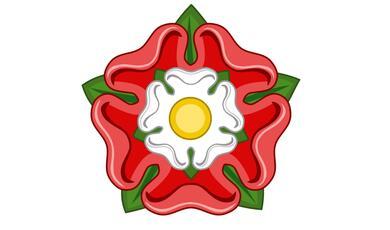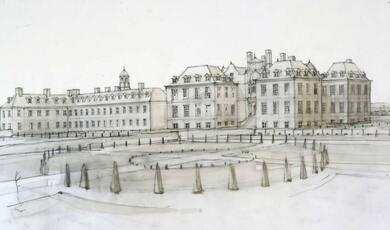Two thousand years of London Bridge
Share
- Details
- Transcript
- Audio
- Downloads
- Extra Reading
The fascinating story of all the bridges that have been London Bridge through the last two thousand years, from the Roman Bridge, and Peter de Colechurch's famous bridge with the houses, through Sir John Rennie's nineteenth century bridge, now in Arizona, and right up to the present day bridge.
Download Transcript
TWO THOUSAND YEARS OF LONDON BRIDGE
Peter Lennard
We’re going to go through two thousand years of London Bridge, or London bridges, because there have been possibly as many as ten bridges on the site. If one takes the Peter de Colechurch Bridge with the houses, later in large without the houses, that’s two bridges, and then we have the John Rennie Bridge, and the present bridge. Before that, there’s the possibility of there being another six bridges, possibly three in Roman times, and at least three in Saxon times, which were swept away very, very frequently. There has obviously therefore been a bridge over the river right from when Londinium was first founded when the Romans first came, and it’s a very essential link. In fact for a long time it was the only link between the north and the south. Now the south is very much built up as well, whereas in the early days, one just had the northern bank, but the bridge has been very much a central part of London life, as we shall see. It has been the main route for kings and queens coming into London, for the vanquished coming in after battles. Many celebrations have been held on it, there has even been jousting on the bridge, over 400 people lived on the bridge, and there were over 140 shops, selling everything you can imagine. It was a complete town on the river.
It’s a fascinating idea to live above a river where not only did you have the water pouring underneath you, you had the tide going up and down 19 feet, and yet it was a very healthy place to live. Obviously the houses have gone. There have been many proposals to build a similar London Bridge with houses every now and again. It may not happen. Some people thought that if you put a housing development above the river, you wouldn’t have to pay rates, but that’s not quite the case! You certainly would have to pay the Port of London Authority, you don’t get away with that, but there have been several proposals. It has always caught the public imagination. Obviously, we’re not the only country that’s had houses on bridges. There are some in France and Italy, and some of those still exist. There were some in England as well. Newcastle-on-Tyne had a very similar bridge to London, which is completely gone. Obviously, we do have a bridge on the same site, and all the bridges which have been here have been famous in their own right, and indeed the last bridge, the Sir John Rennie Bridge, is now famous in Hammersmith City, where it forms the centre of the community of over 40,000 people and is very much the centre of their life. It’s perhaps a better known bridge even than the present bridge, and how long the present bridge will last, we will never know, but if one came back in a thousand years’ time, one might be talking about the last three bridges added to the list we have already.
There’s quite a lot of the early bridge around, on both sides of the river. It didn’t all go to America. But going back to the very first times, when the bridge went over into the Roman city of Londinium, when the Romans arrived here in 43AD. The bridge went straight over the river. Bridges nearly always are at right angles to a river, but when you get to the other side, you get a problem. The roads come off at a very awkward angle, and yet there’s logic to that. On the south side, on the Southwark side, it was all marshes. At high tide, it was virtually all like a huge lake, at low tide; you got islands with a gravel path in the middle, and to get a road down you had to leap from island to island and keep in the middle of the highest part. Consequently, you’d get a rather awkward shape of road coming into London Bridge. The present London Bridge is slightly further upstream. You get residues of this, names like Newington Causeway, which were the causeways over the marshes.
It wasn’t just a bridge head. It was more than that. It had quite a few very important buildings, very important bars, in fact some of the most important frescos in England have been discovered there, which are as good as the ones in Italy, so it was a little town in its own right. Some people have even said that Southwark perhaps may have been a town before the City of London. There was certainly a bridge before London Bridge, up at Vauxhall, which has been discovered, which was built about 600BC, which is a Bronze Age bridge. Caesar mentions that there was a bridge further up, but he decided to cross the river further downstream where it was almost fordable. The river of course would be much wider in those times.
The Museum of London has a very good section on the building of the Roman bridge. The Romans nearly always used the army to do all their building work, both for many civic monuments, and especially for engineering works like the bridge. The Roman army would put up the bridge, and when the bridge was no longer necessary, the Roman army would demolish it and take it down again. They were building with fairly refined techniques, more so than the Medieval people used very often. I’ve got bits of the Roman bridge at home. They were very, very fine chunks of timber, beautifully made, also very regularly sized, far more so than the Medieval bridge, and the Peter de Colechurch Bridge. They were moved over from both sides, very likely joining in the middle, and this would have been the first bridge built when they first arrived. There would have been about three bridges, the first one destroyed by Bodicea, another one thereafter which may have had timber piers, and then the final bridge, which went on to the time when the Romans left, in about 410AD.
The Museum of London has pictures showing the bridge and all the other large buildings which London had at the time: the Forum, the Governor’s Palace, and the Temple of Diana, which became St Paul ’s Cathedral finally. Ships always have to lodge in this area because they can’t go up beyond very much and once you’ve got a bridge, it limits where the Port of London would be. In Saxon times, when there wasn’t a bridge, the Port of London moved upstream, but then moved down again when the first bridge was built in Saxon times.
If you go to Lower Thames Street, Lower Thames Street was the actual borderline of the river at the time, but where Adelaide House is now was all reclaimed land, and the Romans reclaimed this quite early on, in 80AD. Width was a problem with bridges. The Romans did have wagons. In Medieval times, it was mainly people and horses, and they could always jumble past each other. When everybody started to have private carriages in the 18 th Century, that was the end of having a narrow bridge with houses on it. The first bridge was made of timber. Later on, after Bodicea’s time, they may well have built a bridge which had a timber superstructure but possibly concrete or brick piers. We don’t have any evidence of those at the moment. We know the line of the bridge because people being superstitious, as they walked over, they used to throw coins in on both sides, and so archaeologists have been able to find in the mud the line of those coins, and exactly where the bridge was. The bridge was possibly at a very slight angle to the river, which is not normally done. In Peter de Colechurch’s time, they were less superstitious, and they went straight to the chapel to say thank you, because it was deemed to be a rather odd thing to walk over water. It was thought to be tempting fate to a certain extent. People gave thanks that you were able to do that, and most bridges did have a chapel on them.
The Roman bridge had a drawbridge in the middle, quite useful to let through larger ships. The bridge lasted on and off from AD43 to 410, when the Romans left. Now, some people say the bridge would have fallen into disrepair, and certainly timber bridges do fall into disrepair over a while, due to rot, rushing water, ice, logs and things going down, hitting them, but in Roman times, very often when they decided that a city was worthy of city status, they would actually build all the things that went with that city status. They would provide the money to build the amphitheatre, the forum and the bridge, and when the city didn’t have that status, as happened to London later on, when York took over to a large extent, they might have demolished it. We know that the Romans actually demolished a forum. It didn’t fall into disrepair. They actually physically demolished a forum and said, right, you won’t have a big forum building any more, and they may well have just simply taken the bridge away at a certain stage, and then one had to rely on ferries.
We have no pictures of the bridge during the Dark Ages, which went on for a very long time. For people who lived in those times, they obviously weren’t so dark, they knew what was going on, and there were many things happening, as England gradually formed from being a Roman colony into being several kingdoms. The bridge disappeared and was replaced by ferries, like at St Mary Overy, where ferries went over. Water men have always jealously guarded their trade, and have never been great fans of bridges, and whenever a new bridge was proposed, the one group of people who didn’t want it were always the water men because it took away their trade. For several hundred years, anything that wanted to go from the north of the river, north of London side to the Southwark side, had to go by ferry, and of course as you know in some places, you can get quite large wide ferries which can take wagons and vehicles nowadays, and very likely the same thing happened then. Lots of goods would have had to be transported – it must have been inconvenient, but they went on with it for a long time, and a bridge is not mentioned until the 9 th century.
By the time you get to this time, there have been several Saxon bridges. Some were actually knocked down by floating ice, some were pulled down in a complicated time when London was occupied by the Danes, and the Norwegians were helping the English who came along to pull down their bridge to help them leave London. It’s a complicated story; the Norwegians under King Olav, who later became a saint, partly due to this and partly due to the fact that he was a saintly king. There were quite a few saintly kings in that period. His ships came along, tied their ropes to the bridge, waited till it was tide going out of course, which helped them a lot, and then they all rowed very vigorously, as the accounts say, and physically pulled the bridge into the river. King Canute not that later on, had to bypass the bridge and made a sort of trench round the bridge to get to the other side. It was very essential if you wanted to surround London, you had to get to both sides of it, so either bypassing the bridge or demolishing the bridge was important. And of course from this episode we have “ London Bridge is Falling Down”, but the real saga is London Bridge is broken down. Later on, in Medieval times, this was altered to be “London Bridge is Falling Down” because at the time it was falling down, and falling down because Queen Eleanor who had charge of the rates on the bridge was spending it on fine dresses and not on the bridge, and so when they say “My fair lady”, it’s said in a very annoyed fashion. “My fair lady” was Queen Eleanor who wasn’t doing her duty. Luckily the good citizens of London took the bridge away from her and from then on the Corporation of London ran the bridge and not the individual heads of state. One of the reasons why London Bridge is known all over the world, is because of that song.
Graham Hugh wrote the first really good book on the history of the bridge, showing how the first Peter Colechurch bridge was built. King John, who gets vilified by lots of people because of the Robin Hood legend, was actually quite an astute king, and he said the bridge should have houses on it in order that their rent should pay for the repair of the bridge. This might not have seemed very necessary at the time when a bridge was brand new, but over a few hundred years it was very necessary. The bridge was always paid for in its renewal by the houses on the bridge, and from this comes the whole wealth of Bridgehouse Estate, which is used for other purposes now. The upkeep of the bridge proportionally is a lot less than it was in those days, but of course the river was also wider then, and there was quite frequently ice on the river, which did a lot of damage to the bridge. So the houses were there right from the start, and the chapel was there right from the start, a chapel dedicated to St Thomas a Becket who had recently been martyred. People went into there very often on their way across the bridge to say their prayers. There was not only a chapel but a crypt down below, and when it was finally altered in the 16 th Century, the crypt remained. The crypt was one of the last bits of the bridge to be demolished when the Sir John Rennie bridge replaced the old Medieval bridge, which lasted 600 years.
A bridge was not only the entry to a city, it was also the entrance in a gated fashion. So you would have gates. You would also have a drawbridge of course, so anyone wanting to invade from the south would have to go through the first set of portcullises and a drawbridge as well, and the drawbridge was replaced many, many times. The houses of course narrow the bridge. This is the only disadvantage, but then this wasn’t too bad I think when most of the people going across were on foot or on horse. They could always weave their way through. There was no left hand or right hand side at the time. People just pushed and got their way through. But all the same, the bridge itself was only about 12 feet wide, which is not very great, and it was always said in Medieval times, if you sent your apprentice to go and get something from the south of the river, you very likely didn’t see him until sunset time. It took that long to get over the bridge. Because it was busy, there was lots of things to do, lots of things to see, there were shops, it was almost like going into an amusement arcade. There was so much to do on the way, your mind got distracted by not only places where you could drink and buy things, but by things going on, looking at things going by, looking at ships on the river. It was a fascinating centre of London. It was, as a street, one of the most fascinating streets in London after Cheapside.
There was a chapel which was rebuilt in the 13 th century. The first chapel was a fairly large building, but it was decided to re-do it in the later style, to make it into a very fine chapel indeed. This lasted right up to the reign of Henry VIII. It was dedicated to Sir Thomas a Becket, and Henry became averse to anyone called Sir Thomas after Sir Thomas More was beheaded. Sir Thomas More was being made into a saint and when Sir Thomas More’s head was put on the spike, it didn’t rot and people flocked in their thousands to see it. This annoyed Henry, so he decided to get rid of anything devoted to anyone called Sir Thomas. It was therefore suddenly changed into a chapel devoted to Mary, but for a very short time, because with the progress of the Reformation, it was changed into a dwelling house. Henry has asked that it should be made into a dwelling house and should look like a dwelling house, so all the top part was demolished and only the crypt was left. Printers occupied it for a very long time, and used the crypt as a place to store paper; a rather damp place to store paper, but they did so, all the same.
The inside of the chapel was quite large, but the stability of the bridge depended quite a bit on what was actually built on the bridge. By having this weight of buildings and a chapel on the piers, it stopped the piers moving with the huge pressure of water both ways. A bridge isn’t a static thing; it has got colossal pressures on it from the moving river and the tide going up and down. The houses pressing down on the bridge actually helped it. You’ll find the same thing with the Pont d’Avingnon in France ; the chapel there is the one part of the bridge which is still there. Most of that bridge was swept away in the huge floods they have on the Rhone, but the chapel is the part which has held the bridge. You find that in most bridges which have chapels, it’s that part which is the strongest, but the houses were very helpful, and when the houses went, that’s when the bridge became weak.
London Bridge was a very useful street, but every now and again, it would close for events. The King would come back from his wars. Sometimes the defeated enemy would come back, like Charles VII of France, and it’s thanks to him that we have the first drawing of the bridge. Jousting was held on the bridge but the bridge was used for many, many functions and it was very much the centre of London. People would come here to see what was going on. It was a very healthy place to live because it had air going through it, it didn’t have the sewage problems, everything went straight into the river, and the people who lived on the bridge mainly had a much longer life expectancy than those who didn’t. In fact, people tended to live twice as long on a bridge as they did on the land, where you got narrow streets, smells, and where it was a fairly unhealthy place. 400 people lived on the bridge.
The houses were not so much like Tudor houses with wattle and daub, they tended to be timber clad because simply building in that way was a lot easier when you were hanging over a river. It wasn’t easy to build things on, and of course every now and again, arches would fall into the river and had to be re-built; houses would fall in as well. There were quite a few fatalities; building a house that stuck out on both sides of the bridge, on props, was not an easy thing to do.
The houses were fairly strong, but you couldn’t demolish one side without demolishing the other, so houses always had to be built in one go.
People would go over the bridge, largely undercover, and when one part of the bridge burnt down, they rebuilt it undercover because were used to the fact that you were undercover on the bridge, which was unusual. Crossing London Bridge on a wet day, people get windswept and very, very exposed, but in those days, you were less likely to get wet on London Bridge than you would be going down Cheapside, which is a wider street. There were lots of shops selling everything you could imagine. Every trade in London was represented on London Bridge. There was even a brewery there. There were many printers, and everything would be labelled “Printed on London Bridge ”, “Made on London Bridge ”, and people are still finding these things now which come up at sales.
The houses were hanging over and relied on props. The houses joined at the top and needed a room overhead which held the whole thing together. The shop would be down below, the shop owner lived above, and then storage and servants above that. They even had fires of course, but there weren’t many fires themselves on the bridge. The Great Fire of London missed hitting the bridge, and because of the air going around and not being too hemmed in, fires didn’t get going very much on the bridge, there were only one or two, so houses survived on a bridge longer than they did in the centre of London.
This was a remarkable house, put up when the great stone gate was finally demolished, called Nonesuch House, which was prefabricated, made in Holland and brought over in pieces, and then built. This was one of the finest houses on the bridge and the Lord Mayor of London lived there at one time. It was a very fine building.
There was a fire in 1632, which demolished the houses at one end. This was a godsend because they took a long time to rebuild them, and when the Great Fire came, they’d only got one bunch of houses built at the end in the new style as opposed to the Medieval style. But the Great Fire of London didn’t touch that part of the bridge because the gap helped. But ten years later, there was a great fire in Southwark, but the gateway prevented the flames from getting to the other houses. So buildings like Nonesuch House continued right till the very end of the bridge, in a very dilapidated state finally, and virtually all the houses remained for a very long time.
Later the houses became cased in, modernised, sometimes beginning to use (because they had better techniques) render on the outside. They had walkways on the roof where you could walk round and look at things.
It was the coming of carriages that really caused the end. When you started to get all the trade being done by horses and carts, they couldn’t pass each other on the bridge, and they had to start saying “Keep to the left”. Some people say this is where our English rule of “keep to the left” came about, but I believe the Romans drove on the left. But it was very necessary. It didn’t need to happen so much on other streets in London, but on the bridge, it was absolutely essential to separate the two. The houses from that time were doomed, when everybody started to have a private carriage instead of riding on a horse. It was like the motorcars now. London Bridge most likely had more carriages going over it in the 18 th and 19 th Century than there are vehicles going over it at the moment. It became very, very busy, and it was impossible to have a roadway only 12 feet wide with all this traffic. So the bridge’s committees had to decide what to do, and they decided to get rid of the houses; but not only that, they actually widened the bridge. It was added to on both sides, and made three times as wide as the original centre part of the bridge.
So the houses were demolished, and they decided in the middle part to take away two of the arches, and to rebuild a huge modern arch, so that much larger ships could get through. This was the bridge’s undoing, but it was thought to be a good idea at the time.
It was rebuilt in Gothic style; it was a little bit bringing in new London taxis and wanting them still to look like the old taxis. They wanted the bridge to look a little bit like the old bridge. They could have made it look entirely modern, but they put Gothic details on to the new parts they were building.
With the great arch in the middle, and the starlings somewhat reduced, all the water running through caused a huge amount of damage to the foundations, and this was the undoing of the bridge. This happened in the middle of the 18 th century, in about 1762, but by 1800 they were saying that the bridge had got to be replaced entirely. But for the people going over the bridge, with the new widened roadway and new balustrades, it looked like a brand new bridge. When you got to the side of it, you could see of course it was the old bridge in disguise.
The first bridge to make things easier for Londoners was Westminster Bridge, quite a long way away. That didn’t last very long because when Rennie rebuilt London Bridge later on, the river started to flow faster and that undermined the foundations of Westminster Bridge, which had to be renewed after about 50 years. But then other bridges followed, especially in the 19 th Century, Southwark, Blackfriars, etc.
There was a proposal to build London Bridge with one huge cast iron arch, but to do that would have meant having to go up very high on both sides of the bridge, which was physically impossible. When Rennie’s new bridge was built, it cost £600,000, but the approaches to the bridge cost a million pounds, and these are the first piles going in, with the old bridge in the background.
A huge amount of changes had to happen. Lots of houses were demolished on both sides of the river. Lots of houses had to be bought. It was very, very costly. The biggest cost was not the bridge itself, but the approaches and the buying of the houses to make the bridge come into place.
From that point on, then the river flowed much more freer, but it meant that ice didn’t accumulate. You had no more frost fairs that had been a great feature of the Thames in those days. Once the old bridge went, the Thames has hardly frozen up since that time, because the water moves too fast.
So that was the end of the old bridge It was quite a lengthy process: it took a whole year to demolish the old bridge, and it was quite difficult getting out the old foundations.
In the old chapel found underneath the dwelling house above, they found some old bones which were thrown in the river. Those bones were the bones of Peter de Colechurch, whose bridge had lasted 600 years. It was not a very good recompense for all the effort he put into it, and the replacement bridge only lasted 150, so Peter Colechurch did very well.
The opening of the new bridge was a grand occasion, rather like the opening of the present bridge, except on this occasion they consumed 10,000 bottles of wine. Queen Adelaide and King William where there, and they named the place to the south Adelaide Place, and then the building there became Adelaide House. It was a very great occasion.
The Victorians were very good at having great occasions; when they opened the Blackwell Tunnel or the Rotherhithe Tunnel. They always had a party and huge dinner on board. Of course the bridge became immensely busy. There were arches on both sides of the river. The Fishmongers’ Hall was one of the victims of the bridge because it was right in the way. They had to rebuild it with the insurance money and built a very fine new hall. The old hall was a very fine hall, but the new one surpassed it in grandeur.
Immediately the bridge opened, railways came in, and it suddenly meant that London Bridge became a lot more than just being a bridge to London, it was the bridge where all the commuters came into London. What we call London Bridge now is often thought as being the London Bridge Station on the south side of the river, which was given its name. Areas were named after a bridge, areas like Victoria for instance, and then the station.
The bridge was rebuilt, and it was rebuilt in a rather cunning way. Instead of building two bridges side by side, which could have been done, they rebuilt the new bridge by the side of the existing bridge, and then demolished the middle part separately, so you always had a bridge going. It was a massive structure build by Mowlems. Then the old bridge was taken over to Lake Havasu City, where it’s the centrepiece of their community. But they didn’t take over all of it, the north and the south side and quite a lot of the stonework was left.
So that’s the story of London Bridge for the last 2,000 years. It’s a long story, but it’s telling the story of ten bridges in one, taking us right from the Roman times up till now.
© Peter Lennard, 2004
This event was on Wed, 10 Nov 2004
Support Gresham
Gresham College has offered an outstanding education to the public free of charge for over 400 years. Today, Gresham plays an important role in fostering a love of learning and a greater understanding of ourselves and the world around us. Your donation will help to widen our reach and to broaden our audience, allowing more people to benefit from a high-quality education from some of the brightest minds.


 Login
Login







